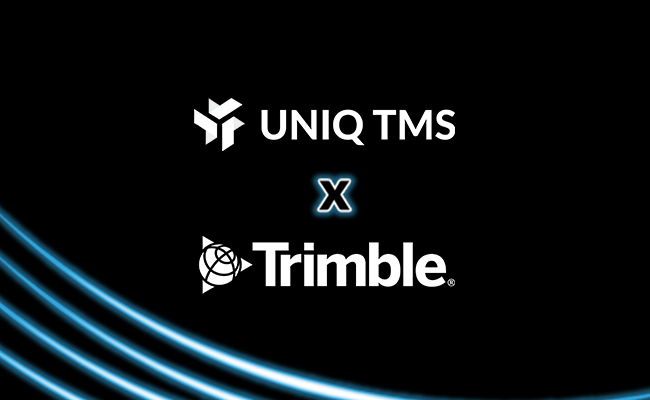
Finding the right tools to streamline your operations is essential–especially when they come in the form of free software. And when it comes to managing your transportation needs, a Transportation Management System (TMS) can be a game-changer. But with so many options available, how do you decide between a free TMS and a paid solution? Let’s dive in and explore the pros and cons of each to help you make an informed decision.
Understanding TMS: An Overview
Before we delve into the specifics of free TMS and paid solutions, let’s start with a brief overview of what a TMS is. A TMS is a software application designed to manage and optimize various aspects of transportation operations, including planning, execution, and freight payment. It serves as a centralized hub for managing shipments, carriers, and transportation costs.
What is a TMS?
A TMS is essentially a digital assistant that helps businesses streamline their transportation processes. It provides real-time visibility into shipments, automates manual tasks, and enhances collaboration among stakeholders, such as shippers, carriers, and customers. By leveraging data analytics, a TMS can also identify cost-saving opportunities and improve overall supply chain efficiency.
Moreover, a TMS can integrate with other systems, such as enterprise resource planning (ERP) software, warehouse management systems (WMS), and electronic logging devices (ELDs), to provide a comprehensive view of the entire supply chain. This integration allows for seamless data flow between different functions, enabling better decision-making and operational coordination.
Importance of a TMS for Businesses
Transportation is a critical component of the supply chain, and any inefficiencies in managing it can have a significant impact on a company’s bottom line. A TMS helps businesses optimize their transportation operations, reducing costs, enhancing customer service, and improving operational efficiency. It enables companies to make data-driven decisions, track shipments in real-time, and proactively manage any disruptions in the transportation process.
Furthermore, a TMS can provide valuable insights through reporting and analytics, allowing businesses to identify trends, monitor key performance indicators (KPIs), and forecast future transportation needs. This data-driven approach not only improves operational efficiency but also helps companies stay agile and responsive in a dynamic market environment.
Free TMS: Pros and Cons
Now that we have a better understanding of TMS, let’s explore the pros and cons of opting for a free TMS solution.
Benefits of Using Free TMS
Free TMS solutions can be a great option for small businesses or startups with limited budgets. Here are a few benefits:
- Cost-effective: As the name suggests, free TMS solutions don’t come with any upfront costs, making them an attractive option for businesses operating on tight budgets. This can be especially beneficial for new businesses that are still establishing themselves in the market and need to allocate their resources wisely.
- Basic functionality: Free TMS solutions often offer essential features like shipment tracking, carrier management, and reporting, which can help businesses get started with managing their transportation needs. These features provide a solid foundation for businesses to streamline their logistics operations without the need for a significant financial investment.
- No long-term commitment: With a free TMS, you have the freedom to test the waters without being locked into a long-term contract. This flexibility allows you to evaluate the system’s suitability for your business before making a financial commitment. It also gives you the opportunity to explore other TMS options if you find that the free solution doesn’t meet your evolving needs.
Potential Drawbacks of Free TMS
While free TMS solutions can be appealing, there are some drawbacks to consider:
- Limited functionality: Free TMS solutions often lack advanced features and customization options that paid solutions offer. While they may be sufficient for small businesses with straightforward transportation needs, as your business grows, you may find yourself outgrowing the capabilities of a free TMS. It’s important to assess your long-term goals and evaluate whether a free solution can support your future needs.
- Lack of support: Free TMS providers may not offer dedicated customer support, leaving you to troubleshoot issues on your own. This can be time-consuming and frustrating, especially if you encounter any technical glitches that require immediate attention. It’s essential to consider the level of support you may need and weigh it against the cost savings of a free TMS.
- Data security concerns: Free TMS solutions may not provide the same level of data security as paid solutions. If you deal with sensitive customer information or proprietary data, it’s important to assess the security measures in place. Consider factors such as data encryption, access controls, and compliance with industry standards to ensure that your data remains protected. Investing in a paid TMS solution may provide you with greater peace of mind when it comes to safeguarding your valuable information.
As you weigh the pros and cons of a free TMS solution, it’s crucial to align your decision with your business’s unique needs and long-term goals. While a free TMS can be a cost-effective starting point, it’s essential to consider the scalability, support, and security factors that may impact your business’s success in the long run.
Remember, choosing the right TMS solution is a strategic decision that can significantly impact your logistics operations, customer satisfaction, and overall business performance. Take the time to thoroughly evaluate your options and consider consulting with industry experts or peers who have experience with different TMS solutions. This will help you make an informed decision that aligns with your business’s specific requirements and sets you up for success in the ever-evolving world of transportation management.
Paid TMS: Pros and Cons
Now, let’s turn our attention to the advantages and disadvantages of investing in a paid TMS solution.
Advantages of Opting for Paid TMS
While there is an initial cost associated with a paid TMS, it can offer several benefits:
- Advanced functionality: Paid TMS solutions often come with a wide range of features and customization options, allowing you to tailor the system to your specific needs. This level of functionality can help you unlock new efficiencies and scale your operations as your business grows.
- Dedicated support: With a paid TMS, you can typically expect dedicated customer support to address any technical issues or concerns promptly. This level of support can save you time and help you overcome any challenges that arise.
- Enhanced data security: Paid TMS solutions prioritize data security, offering robust encryption measures and comprehensive data backup capabilities. This is particularly crucial if your business deals with sensitive information or operates within regulated industries.
Possible Disadvantages of Paid TMS
While paid TMS solutions bring many advantages to the table, there are a few potential drawbacks:
- Higher costs: Paid TMS solutions require an upfront investment and ongoing subscription fees. For small businesses or startups on tight budgets, this cost may be prohibitive.
- Learning curve: Implementing a paid TMS solution may require some training and onboarding for users. This initial learning curve can present a temporary disruption to your operations.
- Vendor lock-in: Choosing a paid TMS means committing to a specific vendor for an extended period. It’s crucial to thoroughly evaluate your options and select a provider that aligns with your long-term business goals.
Key Features to Consider When Choosing a TMS
As you weigh the pros and cons of free TMS versus paid TMS, certain key features should guide your decision-making process. Let’s take a closer look:
Essential Features in a Free TMS
When considering a free TMS, make sure it offers these essential features:
- Shipment tracking: The ability to track shipments in real-time is invaluable in providing visibility and managing customer expectations.
- Carrier management: Efficiently manage your carrier relationships and track their performance to ensure optimal transportation outcomes.
- Reporting and analytics: Access to basic reporting and analytics can help you gain insights into your transportation operations.
Must-Have Features in a Paid TMS
For those considering a paid TMS solution, keep an eye out for these must-have features:
- Advanced analytics: Unlock the power of data with advanced analytics capabilities, allowing you to identify trends, measure performance, and make data-driven decisions.
- Integration options: Look for a TMS that integrates seamlessly with your existing systems, such as your ERP or CRM, to streamline your operations and minimize manual data entry.
- Automation and optimization: Opt for a TMS that automates manual tasks and offers optimization algorithms to help you maximize efficiency and minimize costs.
Making the Right Choice: Free vs. Paid TMS
Choosing between a free TMS and a paid solution ultimately boils down to your specific business needs and priorities. Consider the following factors to make an informed decision:
Factors to Consider in Decision Making
When making your decision, consider the following:
- Budget: Evaluate your budgetary constraints and determine whether a paid TMS is financially viable or if a free solution meets your immediate needs.
- Growth trajectory: Consider the scalability of your operations and whether a free TMS can support your business as it expands.
- Technical capabilities: Assess the technical requirements of your business and evaluate whether a free TMS or a paid solution can meet those needs.
- Data sensitivity: Determine the level of importance you place on data security and compliance with privacy regulations.
Evaluating Your Business Needs and Budget
As you conduct a thorough evaluation of your business needs and budget, remember that the choice between a free TMS and a paid solution is not necessarily binary. Many TMS providers offer a range of plans that cater to different business sizes and requirements. It may be worth exploring different pricing tiers to find a solution that strikes the right balance for your organization.
Ultimately, whether you decide to opt for a free TMS or a paid solution, implementing a TMS can have a significant positive impact on your transportation management and overall supply chain efficiency. Take the time to research and evaluate the available options, considering both the short-term gains and long-term implications for your business. By making an informed choice, you can optimize your transportation operations and propel your business forward with confidence.
Ready to Transform Your Transportation Management?
Discover how Uniq TMS can streamline your logistics operations, enhance efficiency, and boost your bottom line. Click here to learn more and explore our innovative solutions designed to meet your unique transportation needs.

